e:HEV – Honda’s Innovative Hybrid System
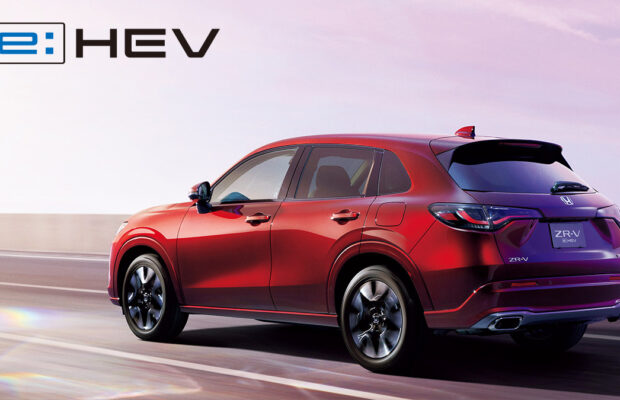
Original Hybrid System Integrates Environmental Performance and FUN at a High Level
Honda began taking initiatives, ahead of the times, to adopt electrification technologies to its automobiles in various ways, in order to reduce CO2 emissions, which Honda considers a critical challenge for a manufacturer of mobility products. Among these electrification technologies, hybrid-electric systems are the most familiar one, and Honda is further expanding its lineup of hybrid-electric models.
A hybrid-electric vehicle is equipped with electric motors in addition to an engine and achieves excellent fuel economy by efficiently using those two power sources.
The e:HEV hybrid-electric system was created by combining all of the engine and electrification technologies Honda has amassed to date and adopting a host of new technologies to achieve overwhelmingly high fuel economy and a new level of fun of driving.
The electric motor drives the vehicle for the entire speed range, and the internal combustion engine (ICE) is engaged only while cruising at high speed. This system achieves high environmental performance while offering the fun of driving unique only to e:HEV, unattainable with an ICE-only system.
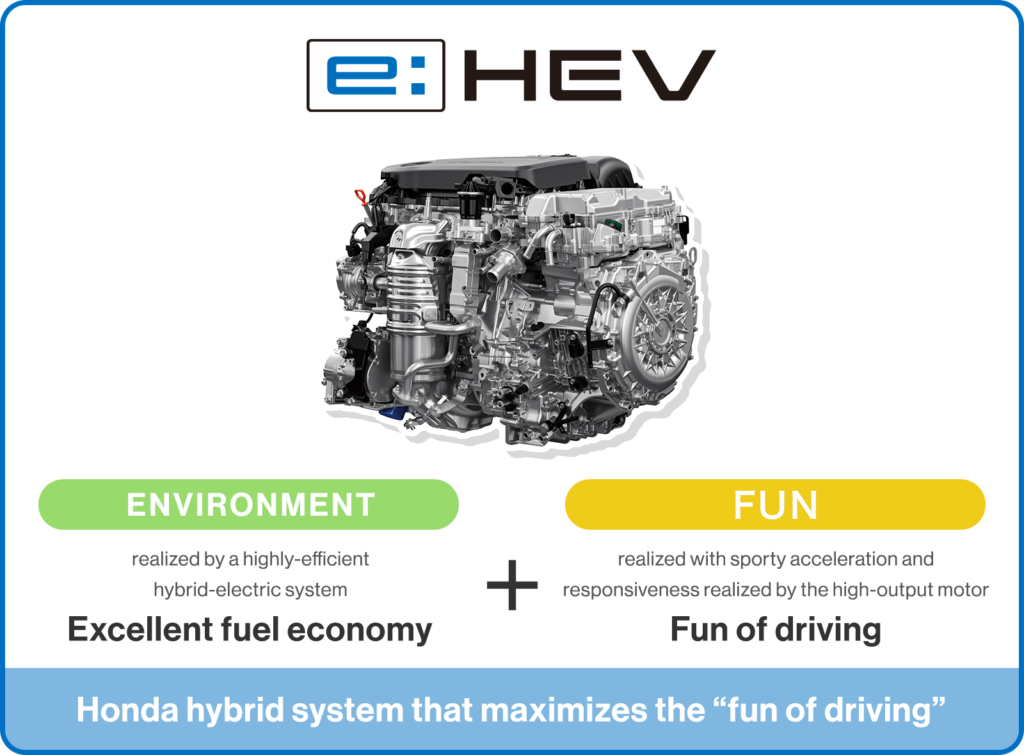
Honda e:HEV Hybrid-electric System Brings the Best Out of the Motors and Engine
An ICE can generate high output at high-rpm range, but have difficulty in generating large torque at low-speed range such as when the car starts moving from a stop. Due to this characteristic, the fuel economy of ICE vehicles is not very high in urban areas frequent stops and starts are required. On the other hand, an electric motor can generate maximum torque from the low-speed range such as when the vehicle starts moving. By using an electric motor at low speed and an ICE at high speed, the hybrid-electric vehicle achieves high efficiency and thus high fuel economy.
Automakers around the world use different hybrid-electric systems, and all automakers use different systems depending on the size of the vehicle.
In general, there are three types of hybrid systems: 1) a series hybrid, in which the engine generates electricity and the electric motor drives the vehicle; 2) a parallel hybrid, in which the engine primarily drives the vehicle while the motor assists; and 3) a series-parallel hybrid, in which both the engine and motor act together to drive the vehicle.
For the low- to mid-speed range, where the motor has an advantage over the engine, the e:HEV works like a series hybrid, and drives the vehicle with a motor. During high-speed cruising, where the engine has an advantage over the motor, the e:HEV works like a parallel hybrid and the engine which is simply and directly connected to the tires primarily drives the vehicle. In other words, the e:HEV is an intelligent hybrid system unique to Honda, taking advantage of both series and parallel hybrid systems.
The Difference Between e:HEV and Other Types of Hybrid-electric Systems
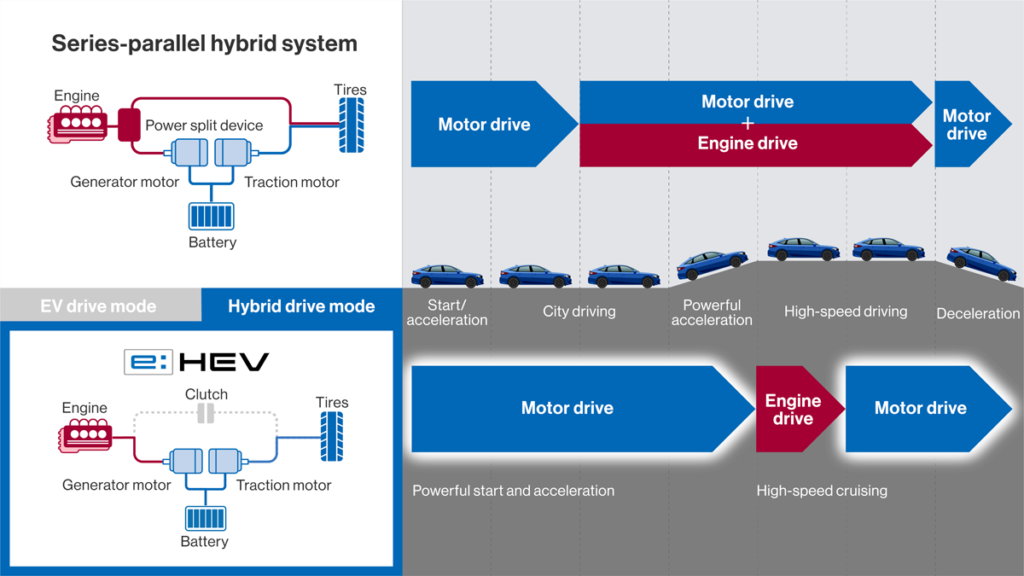
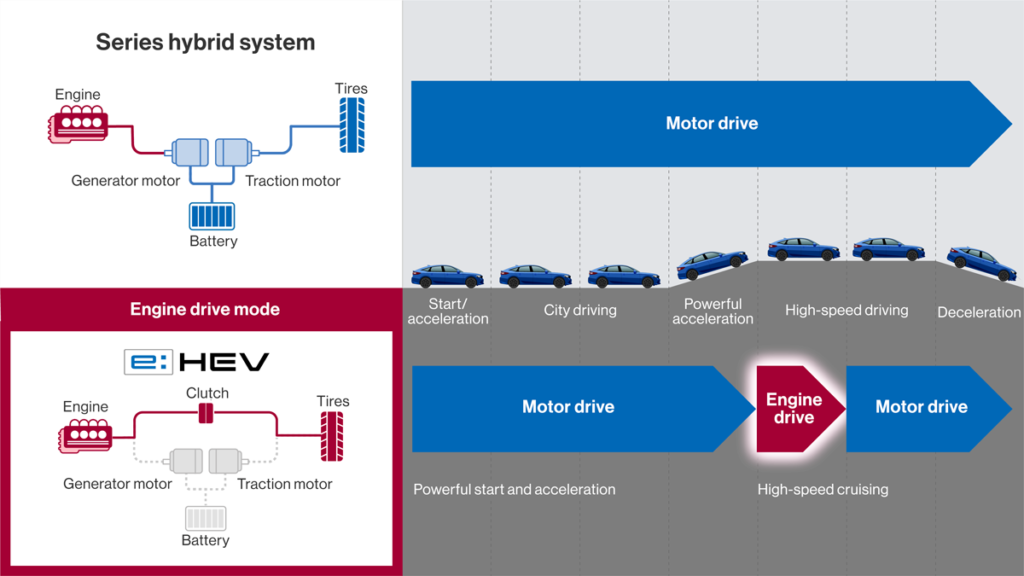
Difference with a series hybrid-electric system
With a series hybrid system, the engine generates electricity which is used by the electric motor which drives the vehicle for the entire speed range. Even during high-speed cruising, the motor, which is less effective than the engine, has to maintain high rpm, therefore, the engine must increase the amount of electricity generation. In contrast, during high-speed cruising, the e:HEV simply engages the engine directly to drive the vehicle. The vehicle drives with high quietness and fuel economy in the speed range where the engine is most efficient.






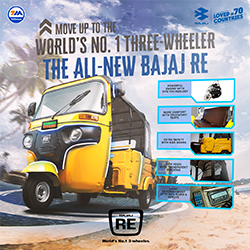


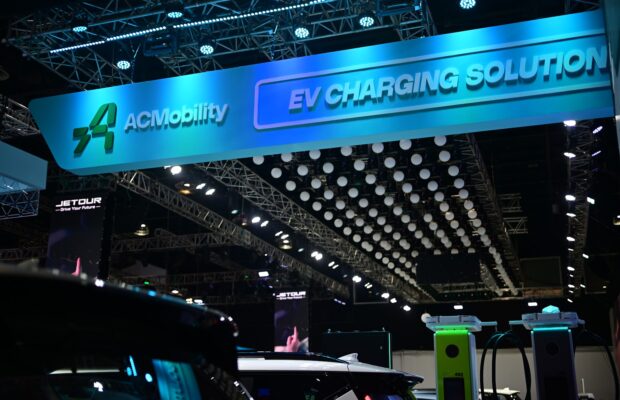


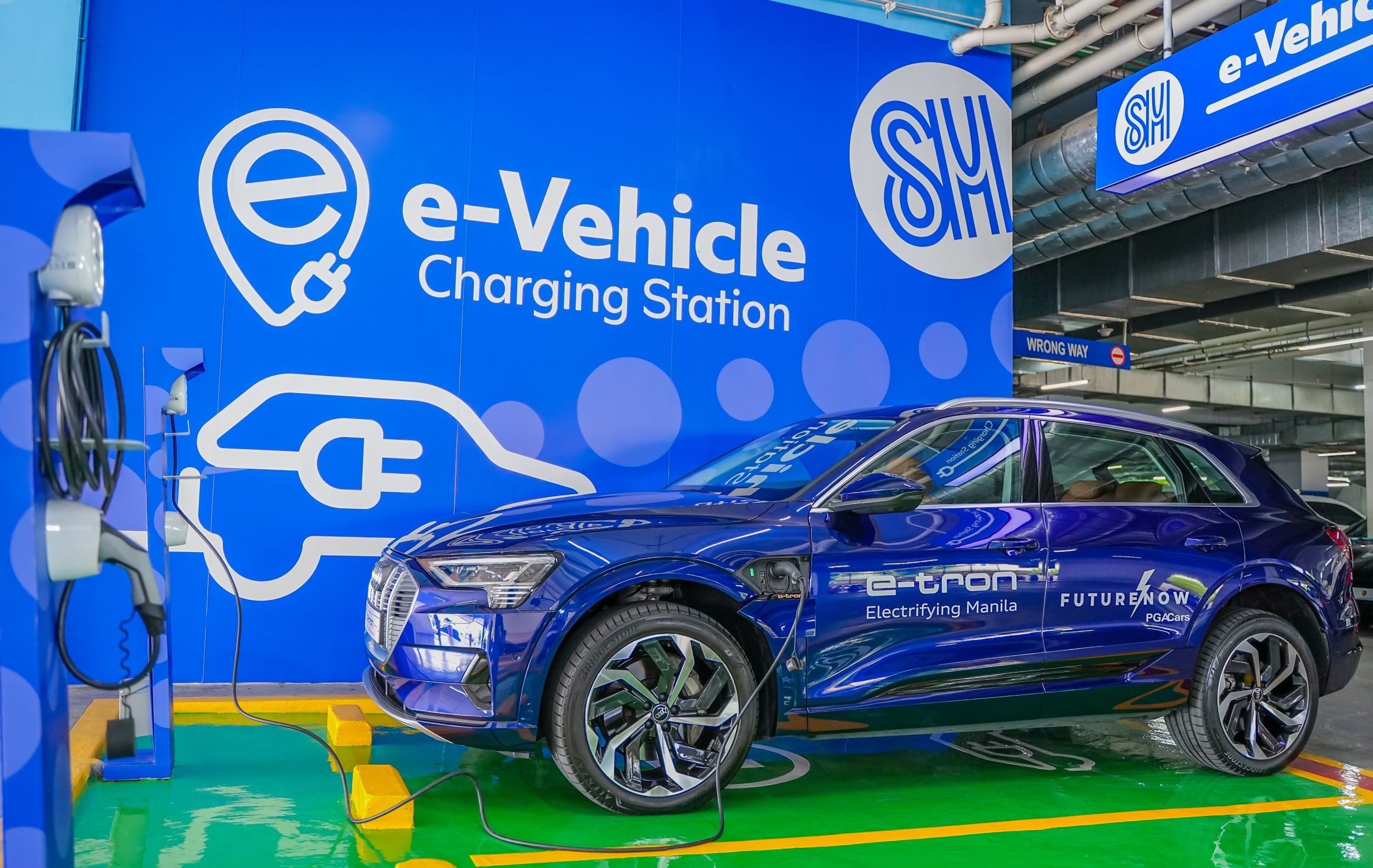



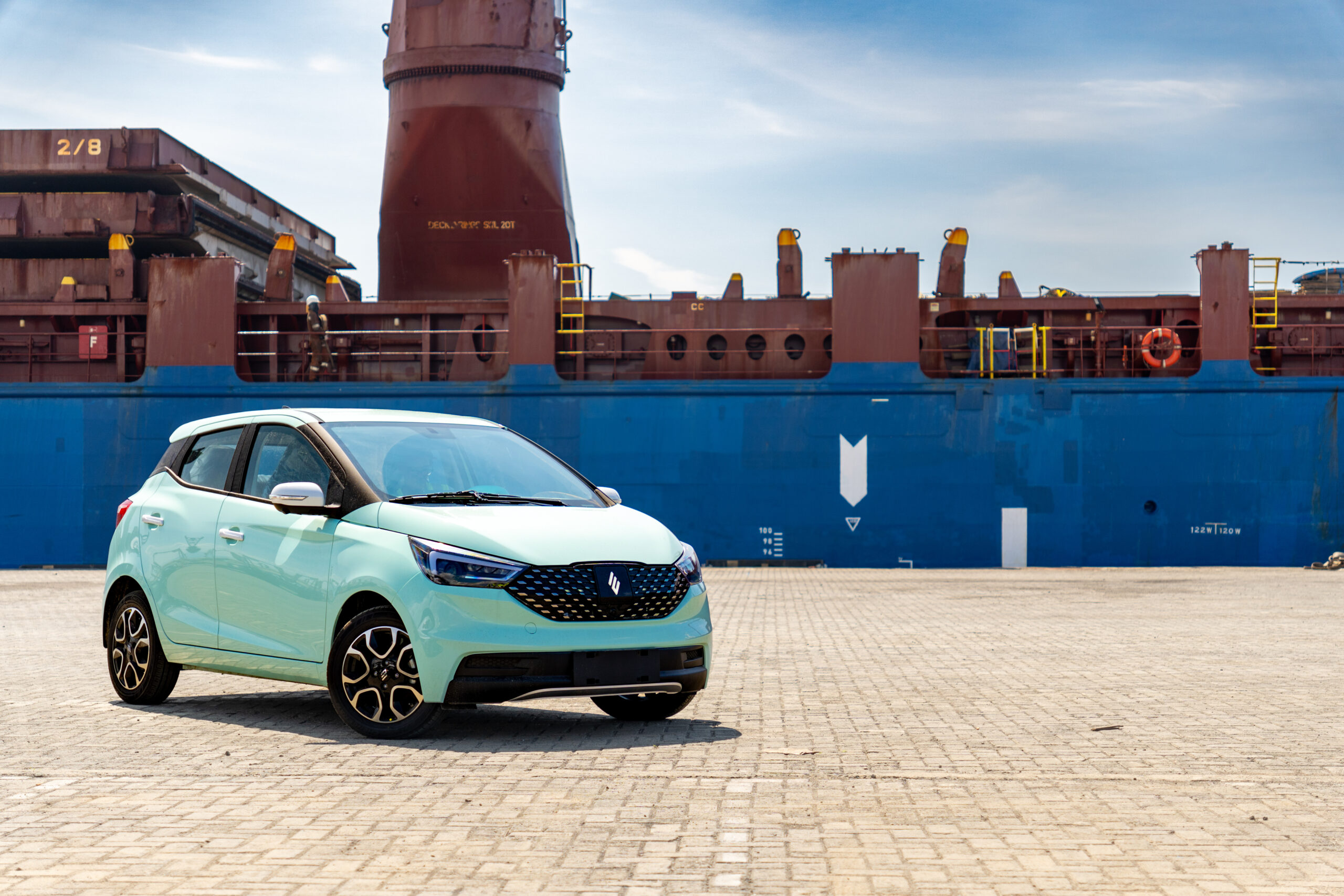






0 comments